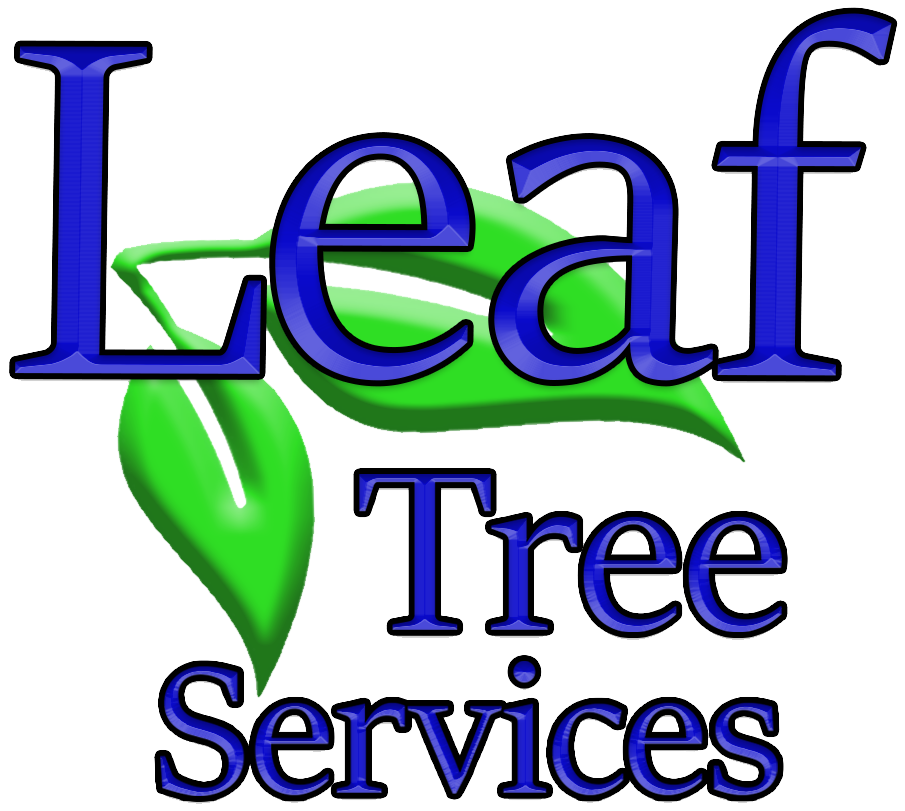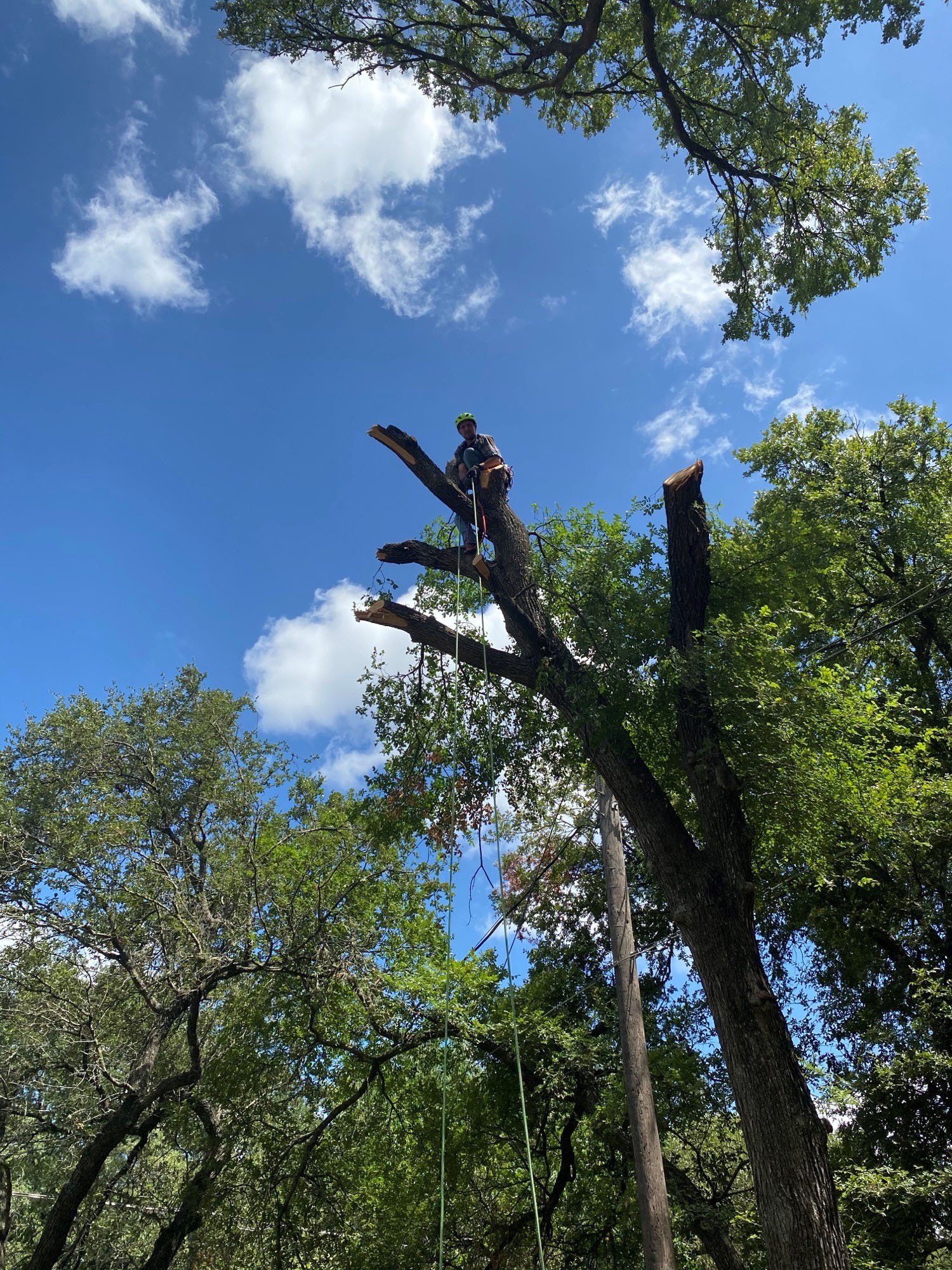Arborist can help treat damaged trees on your property
Top arborists in Round Rock and Austin TX can help you take care of damaged trees. When trees suffer damage, whether it’s from severe weather, disease, pests, or human interference, they often require prompt and skilled attention to promote healing and preserve their health and structural integrity. Arborists, also known as tree surgeons or tree care specialists, are professionals trained in the science and art of tree care, including diagnosing and treating various tree ailments. In this two-part article, we will delve into the comprehensive process an arborist undertakes to treat damaged trees, beginning with the crucial step of assessing the extent of the damage.
Initial Evaluation:
Upon receiving a call or request for assistance regarding a damaged tree, an arborist first conducts an initial evaluation of the tree’s condition. This evaluation involves a thorough inspection of the tree, looking for visible signs of damage such as broken branches, split bark, leaning trunk, or insect infestation. Arborists also assess the tree’s overall health, considering factors like leaf color, density, and presence of disease symptoms.
Identifying the Cause:
Once the initial evaluation is complete, arborists work to identify the underlying cause of the tree damage. This could involve determining whether the damage was caused by environmental factors such as storms or drought, biological factors like pests or disease, or human activities such as improper pruning or construction damage. Identifying the cause is crucial for developing an effective treatment plan tailored to address the specific issues affecting the tree.
Structural Assessment:
In addition to evaluating the visible damage, arborists also assess the tree’s structural integrity to determine if there are any internal issues that may compromise its stability. This often requires specialized tools such as resistograph or sonic tomography to detect decay or structural weaknesses within the tree trunk or branches. By thoroughly assessing the tree’s structure, arborists can identify potential hazards and develop strategies to mitigate them.
Risk Assessment:
As part of the evaluation process, arborists conduct a risk assessment to determine the likelihood of further damage or failure of the tree. Factors such as the tree’s location, proximity to structures or utilities, and the presence of pedestrian traffic are taken into account to assess the level of risk posed by the damaged tree. This information helps arborists prioritize their treatment efforts and recommend appropriate measures to mitigate potential risks.
Documentation:
Throughout the assessment process, arborists meticulously document their findings, including photographs, measurements, and detailed notes. This documentation not only serves as a reference for developing the treatment plan but also provides valuable information for future monitoring and evaluation of the tree’s progress. Additionally, it ensures transparency and accountability in the tree care process, particularly when dealing with insurance claims or legal disputes.
Treating Damaged Trees
In the previous section, we discussed the initial steps arborists take to assess the extent and cause of tree damage. Now, let’s delve into the diverse range of treatment options available to arborists for addressing damaged trees and promoting their recovery.
- Pruning:
Pruning is one of the most common and effective methods used by arborists to treat damaged trees. By selectively removing dead, diseased, or damaged branches, arborists can improve the tree’s overall structure, promote new growth, and reduce the risk of further damage. Proper pruning techniques are essential to minimize stress on the tree and encourage healthy regrowth.
- Bracing and Cabling:
For trees with structural weaknesses or damage, arborists may recommend the installation of braces or cables to provide additional support and stability. Bracing involves the use of hardware such as bolts and rods to reinforce weak or split branches, while cabling uses high-strength cables to support multiple stems or branches. These techniques help reduce the risk of limb failure and prolong the lifespan of the tree.
- Tree Injections:
In cases where trees are affected by pests, diseases, or nutrient deficiencies, arborists may administer treatments through injections directly into the tree’s vascular system. Tree injections deliver targeted doses of pesticides, fungicides, or fertilizers, bypassing the need for spraying and minimizing environmental impact. This method ensures effective delivery of nutrients or control agents to the affected parts of the tree, promoting rapid recovery.
- Surgical Interventions:
In situations where extensive damage or disease has compromised a tree’s health, arborists may resort to surgical interventions such as tree surgery or removal of diseased tissue. Tree surgery involves precise cutting and removal of damaged or diseased portions of the tree, while preserving as much healthy tissue as possible. In severe cases, tree removal may be necessary to prevent further spread of disease or mitigate safety risks.
- Soil Management:
Healthy soil is essential for the vitality of trees, and arborists often implement soil management techniques to improve nutrient availability, soil structure, and moisture retention. This may involve aerating compacted soil, applying organic mulch to retain moisture and suppress weeds, or administering soil amendments to correct nutrient deficiencies. By optimizing soil conditions, arborists support the long-term health and resilience of damaged trees.
- Follow-up Care:
After implementing treatment measures, arborists provide ongoing monitoring and follow-up care to ensure the effectiveness of their interventions. This may include regular inspections to assess the tree’s response to treatment, adjustments to maintenance practices based on seasonal changes, and additional treatments as needed to address any new issues that arise. By staying proactive and attentive, arborists help maximize the chances of successful recovery for damaged trees.
In conclusion, treating damaged trees requires a combination of expertise, experience, and specialized techniques to address the underlying issues and promote healing. Arborists play a crucial role in diagnosing tree ailments, developing tailored treatment plans, and implementing effective interventions to restore health and vitality to damaged trees, preserving their beauty and ecological value for future generations.
Hire the top arborist in Round Rock and Austin TX
Leaf Tree Services is your locally owned professional tree service with certified arborists for residential and commercial customers in Round Rock, Austin, and surrounding Central Texas areas. You can trust your trees to us. Contact us today to schedule a consultation, 512-670-6766.


